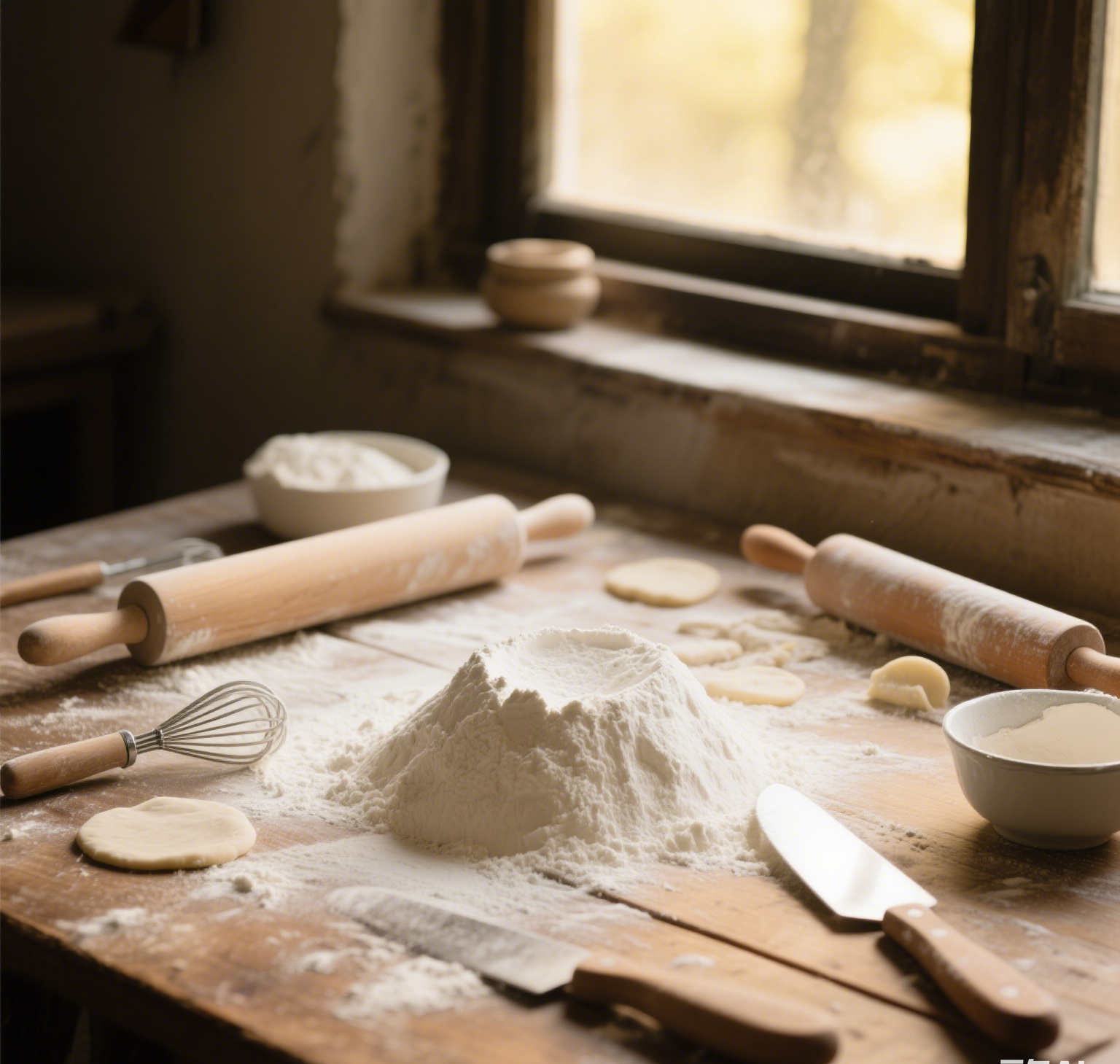What’s in Flour? (Spoiler: It’s Not Just Magic Dust)
Let’s get one thing straight: flour is the ultimate kitchen wingman. It’s the quiet hero that holds your cakes together, gives your bread its swagger, and turns gravy from “meh” to “chef’s kiss.” But what exactly is this powdery wizardry? Is it ground-up unicorn horns? Fairy dust? (Spoiler: No, but we’ll keep that rumor alive for fun.) Whether you’re baking cookies or breading chicken, let’s crack open the flour bag and spill its grainy secrets.

1. Flour 101: The Basic Recipe for Kitchen Alchemy
At its core, flour is just finely milled grains, seeds, or roots. But don’t let its simplicity fool you—it’s a VIP blend of science and culinary sorcery. Here’s the breakdown:
- Carbohydrates (75–80%): Flour’s main gig is providing starch, the energy source that makes dough rise and cookies crisp. Think of carbs as flour’s extroverted best friend—they’re here to party.
- Protein (6–15%): This is where the drama happens. Proteins like glutenin and gliadin form gluten when mixed with water. More gluten = chewy bread. Less gluten = tender pie crusts. Flour’s protein content is why bakers have strong opinions. (Looking at you, bread flour vs. cake flour debates.)
- Moisture (8–14%): Flour isn’t bone-dry—it needs a little hydration to avoid becoming a kitchen fire hazard.
- Minerals & Vitamins: Modern flour is often fortified with iron, B vitamins, and folic acid. Basically, it’s a multivitamin in disguise.
Golden nugget: Flour is like that friend who adapts to any situation—party planner, therapist, or emergency snack provider.
2. The Flour Family Tree: From Wheat to Weird
Not all flours wear capes (though they should). Here’s your field guide to the Avengers of the baking aisle:
A. Wheat Flour: The OG Superstar
- All-Purpose Flour: The Swiss Army knife of flours. Perfect for cookies, pancakes, and convincing your kids you’re a “real chef.”
- Bread Flour: The Hulk of proteins (12–14%). It’s all about gluten strength, perfect for sourdough boules that could double as doorstops.
- Cake Flour: The delicate cousin (6–8% protein). It’s bleached to soften starch, giving cakes a texture so light, they’re basically edible clouds.
- Whole Wheat Flour: The “I woke up like this” flour. It keeps the bran and germ, packing fiber and a nutty flavor. Warning: It’s denser than your Aunt Linda’s fruitcake.
B. The Rebel Alliance (Gluten-Free Flours)
- Almond Flour: Low-carb, high-protein, and so California. Great for macarons and gluten-free muffins that won’t taste like sadness.
- Coconut Flour: Absorbs liquid like a sponge. Handle with care, or you’ll end up with baked bricks.
- Chickpea Flour: Popular in Indian and Mediterranean cooking. Makes killer socca (and a decent face mask, allegedly).
Golden nugget: Choosing flour is like dating—find the one that complements your vibe.
3. The Science of Squish: How Flour Gets Its Groove
Ever wonder why kneading dough feels like a workout? Blame gluten. When water meets flour’s proteins, they form stretchy gluten strands. More kneading = stronger gluten = bread that could survive a zombie apocalypse. For tender pastries, though, you want weak gluten—hence the mantra “don’t overmix!”
Pro tip: If your dough is tougher than a reality TV villain, you’ve overworked it. Put the spoon down and back away slowly.
4. Flour’s Dirty Little Secrets
- Bugs: Yes, flour can contain microscopic bug parts. The FDA allows it because… well, protein is protein? (Cue nervous laughter.)
- Self-Rising Flour: It’s just flour with baking powder and salt. Great for biscuits, but don’t confuse it with all-purpose—unless you enjoy salty pancakes.
- Bleached vs. Unbleached: Bleaching softens flour and speeds up aging. It’s like Botox for grains.
5. Flour Power: Nutrition Beyond the Carbs
Flour isn’t just empty calories—it’s a nutrient ninja when you choose wisely:
- Fiber: Whole wheat flour serves up 12–15% of your daily fiber per cup. Your gut will thank you.
- Iron: Fortified flours help prevent anemia. Consider it edible armor.
- Folate: Essential for cell growth, especially for pregnant folks. Take that, prenatal vitamins!
Golden nugget: Flour: Because adults shouldn’t have to live on kale alone.
6. Flour Fails (And How to Avoid Them)
- The Cement Cookie Incident: Overmixing + high-protein flour = hockey pucks. Use pastry flour and gentle hands.
- The Great Weevil Invasion: Store flour in airtight containers. Freeze it for 48 hours to kill any stowaways. (RIP, tiny hitchhikers.)
- Mystery Lumps: Sift flour unless you enjoy biting into raw flour clumps. (Spoiler: No one does.)
Conclusion: Flour—The Original Kitchen Alchemist
From crusty baguettes to gooey brownies, flour is the quiet genius turning pantry staples into edible magic. It’s not just “powdered wheat”—it’s chemistry, history, and a little bit of chaos all rolled into one. So next time you dust your countertop with flour, remember: you’re not just baking. You’re conducting a symphony of science, one sprinkle at a time.
Final thought: Life’s too short for bad bread and boring meals. Let flour be your delicious accomplice. 🥖✨
